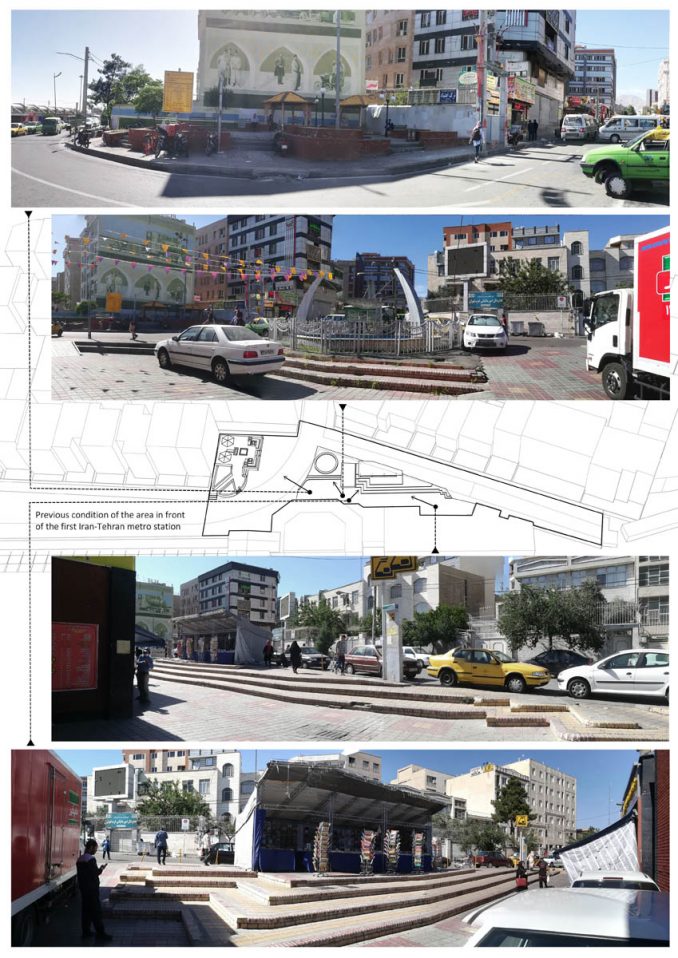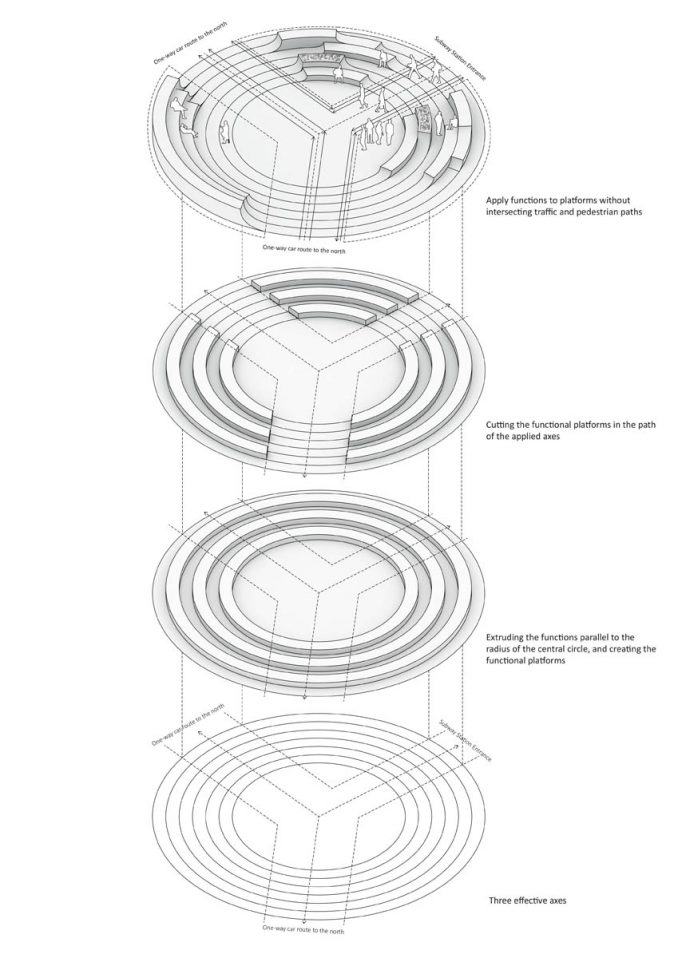
The design subject of Tehran Entrance Plaza was to transform the forgotten urban space around the “Sadeghiyeh” metro station into a lively urban plaza. “Sadeghiyeh” is the first metro station built in Tehran, and it’s considered to be one of the most important terminals in town as a “Transporting Hub”. This hub encourages commuters to use different kinds of transport modes, from the metro to buses, taxis, cars, and bicycles. Due to the transport exchange facilities in Sadeghiyeh, this point in town is considered a focal point for passengers and locals to pause and socially interact, which conversely brings about a lot of environmental disruption and disorder to the neighborhood. To be more specific the issues that were brought up as a result were:
-The violation of pedestrian sidewalks by vehicles and vice versa.
-The takeover of this space as a passenger parking lot creates visual pollution.
-The crowd of vendors on busy sidewalks leading to the station brings about a lot of inconvenience for passengers and pedestrians.
-The gathering of taxi vehicles in front of the station’s entrance.
-The lack of public space for social and cultural ceremonies.
The implementation of this project addresses several issues:
1. Systematizing the different types of uses of the plaza (a suitable location for vendors, a space for social interactions and events, and a green landscape to enjoy).
2. Allocating a suitable pick-up and drop-off point for taxis so that cars and pedestrians don’t cross paths.
3. Creating a path for metro passengers.
4. Making sure that the design solution simultaneously resolves the three concerns mentioned above, and that it can operate coherently and without any interference.

By closely studying the flow of pedestrians and vehicles alongside local vendors in the zone, the first step in the design process was to shape the flow of passengers that get off at this train station and spread into the neighborhood in very short time intervals. By studying the intersection of vehicle routes, metro passenger traffic, and the north street, the team found the answer by identifying where these three paths intersect, and then used that spot as a focal point for a ripple effect. All of the events and functions were derived from these cohesive lines.


The first ripple effect created outlines the boundary of the main courtyard, which will be used as a taxi station. As the ripples move towards the East, where the station’s entrance is located, different special functions are added to the plaza. In between each ripple effect, there are benches that rise from the ground and define the seating area, a place for vendors to display their goods, and green space.



There is a strong pedestrian axis that cuts through the center of this circular rippled effect to create the ground for vendors and pedestrians to interact. As the ripples move towards the West, we are directed towards a space that is allocated for public events and social interactions. Through this common language, CAAT Studio created an urban space and a transportation hub.



Tehran Entrance Plaza
Design Firm: CAAT Design
Principal Architect and Designer: Mahdi Kamboozia
Team: Helena Ghanbari, Hani Golsorkhi, Sina Hakimi
Client: Civilization Office of Tehran Municipality
Plans and Diagram Credits: CAAT Design
Photographer: Ali Ehsani. Parham Taghioff
Text: CAAT Design



